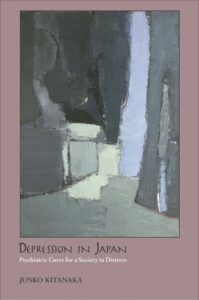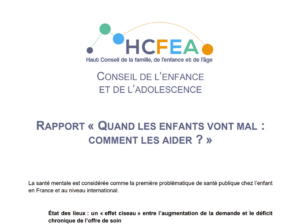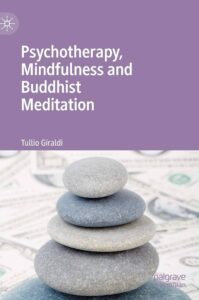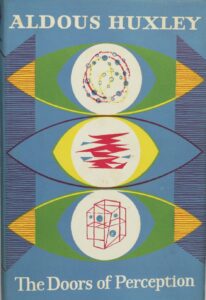
This post outlines an article that will appear in the next issue of Ethical Human Psychology and Psychiatry – Zen and the Art of MoodCycle Maintenance – borrowing from the title of a semi-philosophical book with Zen and MotorCyles in its title that was well-known when some of us were young. The full article with references and footnotes will be published imminently.
It’s also a chapter in Practical Alternatives to the Psychiatric Model of Mental Illness – a book with lots of great chapters edited by Arnold Cantu.
The Rising Sun
In 1997 I was invited by Pfizer, who were attempting to get Zoloft onto the Japanese market, to lecture at a Japanese Neuropsychopharmacology Meeting in Tokyo. Prior to going, I read up on the history of Japanese psychiatry.
The Japanese recognized conditions like taijin kyofusho, common there, non-existent in the West but about to become common in the form of social anxiety disorder.
Germany had been the primary Western influence on Japanese psychiatry, but it was Americans arriving in the 1960s to study the Japanese and Chinese who wrote the story. They brought an assumption that other cultures had to catch up, especially when it came to psychoanalysis. Westerners had minds that could get mentally ill, Easterners were slowly developing minds like this, but they somatized and had concepts like neurasthenia.
Looking for signs of earlier stages of development, Westerners seized on Morita Therapy. This wasn’t psychoanalysis. It resembled behavior therapy but it offered hope these other cultures would learn to value ‘talk-therapy’.
The companies making selective serotonin reuptake inhibitors (SSRIs) certainly hoped the Japanese would become more Western. There were no SSRIs licensed in Japan in 1997. The Japanese viewed their nervous problems as anxiety for which benzodiazepines were effective treatments. Their education to have colds of the spirit kokoro no kaze lay in the future.
Japanese anxiety was converted to depression during the 2000s and beyond, leading to a 7-fold increase in antidepressants prescribed between 1998 and 2012. Does this demonstrate the power of pharmaceutical marketing? Or the imprecision of our diagnostic criteria? Perhaps it demonstrates both. Many clinical cases can meet operational criteria for depression or anxiety. A decade earlier the West had been the testbed for converting cases of Valium into cases of Prozac. In addition, the looseness of these criteria make it possible to diagnose unhappiness or sadness as depression.
With the creation of DSM-III, American psychiatry proclaimed that it was leaving behind the fuzziness of the psychoanalytic era where everyone was viewed as ill or latently ill. This didn’t happen. DSM-III lists operational criteria for diagnoses and states that meeting them requires an exercise of judgement. But simply listing sets of operational criteria sets up a clash between ‘opinions’ with the easiest default being to let the patient have whatever illness they want. Americans have enthusiastically embraced all drugs; they have bought into the idea of being treated for risk factors, spun initially as preventative health, and more recently as wellbeing – The Great Silence.
By 1997, psychoanalysis was eclipsed in the United States as a mainstream activity. But some magisterial, even revered figures, like Arthur Kleinman, remained imbued with analytic ways of thinking, and the influence of these figures meant that American mental health culture remained wedded to the idea of talk therapy. Kleinman viewed the Chinese who complained of neurasthenia rather than depression as mistaken and may have unwittingly done a lot to sell SSRIs in China.
Something similar could be said about another magisterial Harvard figure, Leon Eisenberg, who in the 1960s put ADHD, then called Minimal Brain Dysfunction, and it’s treatment by stimulants, on the map. While viewed by Europeans as almost one of them when he warned against both mindlessness and brainlessness in psychiatry, like most American’s Eisenberg had no sense of the physical roots of European concepts of introversion (autistic spectrum) and extraversion (ADHD), which mean some of us risk manage and others risk take without either predisposition being a disease.
This sketch of my 1997 impressions of Japanese psychopharmacology seen through the lens of a few American texts, is neither exhaustive nor nuanced. I undertook interviews while there and these show that Japan like Europe had had a 1968 moment, in which the Tokyo Department of Psychiatry was occupied by students protesting at the dehumanization represented by biological psychiatry – see David Clark and Michio Toru interviews. For America 1968 was the start of an embrace of biological psychiatry.
In terms of psychopharmacology, Teruo Okuma and colleagues had already done important research, unrecognized in America, that later underpinned the unfortunate American marketing concept of a mood-stabilizer. The Japanese pharmaceutical industry was also at this time beginning to make its presence felt on the global stage and draw on global marketing strategies Toshi-Hiro Kobayashi.
Around 2002, Nikolas Rose contrasting the West and the Rest (especially Japan), framed the issues in terms of Westerners becoming neurochemical selves – something quite different to physical selves. In 2004, in The Marketing Era Kal Applbaum, one of RxISK’s founders used Western pharmaceutical company efforts to penetrate the Japanese market to chart how business practices were subverting professionalism.
In 2011, Junko Kitanaka definitively outlined a post-2000 transformation of Japanese sensibilities from viewing mental disorders like depression as rare and shameful to embracing them. She pointed to the ambiguities in recognizing social issues more readily at a potential cost of locating them within the self.

A Crisis in the Making

This brief account sketches the ground for an emerging crisis. A quarter of a century later, Western countries face a teenage mental health crisis. See Qu’ils Mangent des Medicaments, which features Romain Schmitt, a boy with equal Japanese and French heritage, currently posing significant challenges to the French medical and legal systems – Clinical Details confuse Expert Doctors.

There is alarm at the 10 or more psychotropic drugs teenagers are being prescribed. Some psychiatrists claim even more teens are diseased than realized, needing access to psychiatrists and medication. Non-psychiatrists claim the need is for more talk therapy, as teens are being put on medication in the absence of therapists who can talk to them.
As in the West, Japanese and Korean teenagers are having difficulties. New disorders have emerged like hikikomori syndrome, first described in 1998. Those affected become recluses, living indoors for years. Hikikomori has since spread to the West.
In the West, a contrast between drug and talk therapies is a cliché. Few are aware that for much of the world the idea of fixing a nervous problem by talk therapy doesn’t compute. For the Japanese, until recently it made sense for a confused or unhappy teenager to talk to an adult, but an adult who was an adult, perhaps a teacher or a mentor not a therapist. This had also been the sensible option in the West three decades previously. When the SSRIs were launched, the belief was children did not get depression (melancholia) and it was difficult to find depressed children for clinical trials of SSRIs. What is going on?
Zen Buddhism
Buddhism began to migrate to the West in the early 20th century. This was a spiritual movement not a service for people with mental health problems. The word spiritual is ambiguous here in that Buddhism recognizes no god. ‘Spirituality’, in this context, best connotes an attainment of awareness or openness, often termed enlightenment, either through the practice of meditation or by adherence to norms of ‘right’ behaviour. Its reception in America and Europe was very different.

In the 1990s, as some Westerners were figuring the Japanese would soon join the modern world and understand inner life the way ‘we’ did, a form of Zen Buddhism especially adapted for Western mental health purposes, deliberately called Mindfulness, exploded onto the American scene and diffused rapidly to Europe.
In 1990, Jon Kabat-Zinn’s Full Catastrophe Living introduced Mindfulness, understood as meditation, as a new way to cope with stress. Around 2000, no academic articles featured Mindfulness. By 2018, there were 1000 per year and tens of thousands per year in the lay press.
Kabat-Zinn discarded the spiritual dimension of Buddhism. Mindfulness became a technique, to be tested for effectiveness in conditions defined by DSM. In the U.K., it was incorporated into Cognitive Behaviour Therapy (CBT) and Mindfulness Based CBT is now formally designated as a psychotherapy. MBCBT has flourished as a form of Evidence Based Medicine (EBM) rather than a form of complementary or alternative medicine. As part of EBM, it is reductionist, mechanistic and far from open.
Mindfulness aims at strengthening a poorly functioning self, where Buddhism views the self as an illusion, the source of many of our problems, and not something to be strengthened. For mindfulness, meditation is homework assignment rather than a potential way of life. Mindfulness functions in a world where labels, like bipolar, depressed, or autistic, define people and are incorporated into their identity, whereas Buddhism views these labels as aberrations.
Tojisha Kenkyu

The contrast can perhaps be brought out by a new movement that has emerged in Japan – Tojisha Kenkyu. Tojisha refers to a party in a dispute, as in lawsuits or those contesting discrimination. Kenkyu means research.
Tojisha-Kenkyu began in the 1970s when people suffering from a physical disability began to contest their marginalization. It spread to groups suffering from discrimination, and since 2000 has been increasingly picked up by people liable to attract mental health labels. It encourages people to reflect on their own experience and become, as in the current Western phrase, experts by experience.
In Tojisha-Kenkyu, expertise is not simply born from having a condition, it requires research, which in part means reflection, and a contesting of hypotheses by reporting self-observations to others aimed at finding a consensus. There is an assumption that, whatever the label, the person is individual, and their experience may differ significantly from that of others who might attract a similar label. Individuals, however, are also embedded in a community.
Tojisha-Kenkyu raises questions about what we are doing in the mental health domain. First come questions about the wisdom of stripping out the ‘spiritual’ element from meditative practice. Perhaps we should reconceive meditation as a scientific rather than a religious exercise? Like science, Buddhist meditation attempts to grasp the world as it is rather than as we might wish it to be. Tojisha-Kenkyu makes this more explicit by calling on the parties to a dispute to test things out and come to a consensus judgement as to the best way to explain a situation. This is the very essence of science in general and central to clinical science.
Science
The histories of science stress that science deals in questions that can be ‘settled by data’ rather than questions about the meaning of life. The emphasis in official accounts is on the word data, as though the data speak, are guarantors of objectivity, and considering anything else other than data is to introduce values. The word ‘value’ is typically left undefined and for many hints at religion from which they step back on principle.
Scientific data never speak in this way, not even when processed through endless statistical tests. The key word in this history of science is ’settled’. Objectivity comes from the experiment of testing hypotheses in public hoping to achieve a consensus view, as a legal trial does in front of a jury, or a scientific experiment does when carried out in public. Objectivity does not fall out of statistical tests or algorithms. It stems from two or more people attempting to establish the meaning of events, which is what should happen in clinical settings but has almost vanished from there when the adverse effects of drugs are concerned.
In addition, science from genetics to astronomy is about recognizing individuality rather than generalities. Establishing generalities can help in the scientific process but this is a step on the way rather than the goal of science. Clinical trials can tell us about the average effects of a drug on one parameter, but treating the person in front of me on the basis of average effects is perilous for them, especially if the system denies them the option to dispute what is happening. It is also unscientific in principle and morally hazardous. Moral hazard is used here in a behavioral science rather than a value-laden frame; it implies an alignment of incentives that demonstrably puts patients at risk. In this case, Western clinical professionals get penalized if they acknowledge that pharmaceuticals have adverse effects.
Tojisha-Kenkyu has overlaps with Open Dialogue, Soteria House and Peer Respite. All recognize the importance of individuals in crises that do not necessarily stem from their illness or disability but arise in part because our systems have rendered the person invisible. Unlike CBT for instance it engages with power structures.
Our current crisis affects a growing number of healthy people who health systems have redefined as mentally ill and put on psychotropic and non-psychotropic treatments that produce the features of an apparent mental illness – suicidality, agitation, sexual dysfunction or memories of abuse that never happened etc. This is a growing problem as pharmaceutical companies and many therapists make their money from treating the healthy. Since 2000 the word polypharmacy has entered our lexicon, and with it has come falling life expectancies, even among children and a huge increase in mental illness.
Outer and Inner
Another aspect these developments point to is an encephalization of mindfulness in Western settings – reflected in the use of the word mindful. While for many Westerners, the word meditation is likely synonymous with a mental activity, traditional meditative practices more often refer to a developing awareness of outer and inner.
In the 1880s, William James and Carl Lange cited the body as a key site in knowing what is going on within and without. The brain has a secondary role in knowledge, which is to posit possible explanations for arousal or other changes in internal or external milieu. But in the century that followed, Westerners increasingly viewed their brains as a direct interface with the world, looking out from, or down at, a relatively inert body. Lectures on mindfulness present brain scans and electroencephalographic imagery as evidence that it is working, and the brain is the site of its action.
Our skin, by far the biggest organ in the body, is the boundary between outer and inner[see below]. Along with our eyes and ears, most processing of what is happening within us and without, is done by our sensory systems with skin containing multiple sensory organs.
In the last century, enormous progress has been made to look within brains at their functioning,. While we still do not understand consciousness, we have a better grasp on how brains function than we have about skin, which is extraordinary given how available to explore this boundary is.
When talking about themselves, and the most intimate details of their selves, a wider public, particularly in the United States, talks glibly about their serotonin and dopamine levels. This biobabble has replaced a prior Freudian psychobabble; none of the terms used from serotonin now, to libido formerly, are being used in a scientifically meaningful sense.
There is a parallel here between drug treatments and mindfulness. For over a century the treatment of nervous problems was brain focused aimed at strengthening nerves with tonics or stimulants or damping them down with sedatives. It is assumed that all psychotropic drugs act similarly.
Boundary Drugs
There is, however, relatively little serotonin in our brains. Serotonin is located primarily in skin, gut, blood, and bones. The commonest and most immediate effect of a serotonin reuptake inhibitor is to produce genital numbing, which it does close to universally, and almost as quickly as rubbing a local anesthetic into genitals. The immediacy and similarity to a local anesthetic effect suggests an action at sensory receptors in genital skin.
This genital numbing is accompanied by a muting of orgasm and over time a loss of libido. One consequence of SSRI treatment is that these effects can intensify and remain permanently, after treatment stops – post-SSRI sexual dysfunction (PSSD), leading to suicides. There are no treatments for PSSD. It confounds pharmacological receptor theory.
In many cases the genital numbing is accompanied by an emotional numbing and while not linked by those affected to a more general numbing of touch receptors, a numbing of touch receptors certainly happens. Those with PSSD also complain of brain fog.
With mental features like emotional numbing, brain fog and loss of libido stemming from drugs marketed as ‘antidepressants’ the almost universal assumption is that something has gone wrong in the brains of those affected. A better explanation may lie in a James-Lange view that reconceives the effects of SSRIs as acting on sensory systems. They affect touch and affective touch, vision, and proprioception. Within the brain, these effects show up as reduced input. The difficulties in understanding and solving PSSD may lie in the poverty of our knowledge of peripheral sensory systems.
As this quote about emotional numbing brings out, the effects of SSRIs are close to the opposite of the ‘mind-revealing’ effects of the psychedelic drugs which also work on sensory systems:
The mental symptoms are literally an altered state of consciousness that one absolutely cannot comprehend if he didn’t experience it. No words can explain such a thing. Every day I am shocked that such a state is even possible. It has nothing to with a mood disorder although it would make anyone depressed. The best way to describe it is mental anesthesia. Everything in the mind is tuned down so low, even thoughts. The mind is blank, emotions are so muted that they are barely relevant. In a way, it’s the opposite of what psychedelics do to the mind. They enhance and amplify what is going on whereas SSRIs completely mute it – so much that one has the impression that everything has been wiped out, and there is no mind anymore.
This striking testimony suggests relabeling the SSRIs as psychekleismics (mind closing), an almost directly opposite action to the mind manifesting effect of the psychedelics.
Psychedelics
The SSRIs have created a public health crisis with roughly 15% of most Western populations taking them, primarily because they are unable to stop. Reproduction rates have now fallen below replacement rates, one factor in which may well be the lack of love-making these drugs cause, along with increased rates of miscarriage and of birth defects – Fertility and Serotonin.
This crisis points us toward a previous and perhaps future psychotropic crisis. In 1971, both the use of and research on LSD, psilocybin and mescaline, drugs that act primarily on serotonin systems, were banned because of threats they posed to the social order. Criminalizing a branch of science runs counter to the view that Western societies lead the world in making progress on the basis of science.
The psychedelics, meditation (not mindfulness), and a number of physical techniques that bridge the gap between them such as holotropic breathing, share points in common. All lead to an awareness of outer and inner, caught in Aldous Huxley’s reference to the effects of psychedelic drugs on The Doors of Perception. All lead toward a dissolution of the ego, in some cases to the benefit of what has previously been labelled as a mental disorder. This benefit from experiences has led to a sense that both the psychedelics and meditation might be useful ‘therapies’. But what is a therapy?
Efforts to decriminalize the psychedelic drugs have focused on getting them licensed as therapies. This means adapting them to a world of regulatory standards, algorithmic demonstrations that the standard has been met for DSM defined conditions, and above all embodying them in therapy packages. In practice, embodying the drugs in therapy packages means having a dose that is too low to make a meaningful difference so that treatment has to be given at regular intervals, with costly safeguards in place. Treatment like this becomes a predictable profit point for companies and therapists.
As noted above, something very similar happened when mindfulness was commodified. This template changes the psychedelics and meditation to fit society rather than changes society. The template reduces a three-dimensional experience, aimed at opening people up, to a two dimensional, closed algorithmic system. The algorithmic approach is billed as objective and scientific but an emphasis on procedure is the template on which business and bureaucracy rather than science operates. This business approach is inimical to clinical science. It pretends to an engineering precision but increasingly is a source of alienation for those it professes to be in the business of helping, whether with psychotherapy or drug therapy.
In making disputes socially acceptable again and focusing on the resolution of disputes by critical tests involving the individuals affected, as Soteria House once did, Tojisha-Kenkyu restores the judgement calls and openness that are absent in bureaucratic and business procedures. Can healthcare that hinges on making judgements survive and make a difference in a world of health services, or will Tojisha-Kenkyu face an uphill struggle as Open-Dialogue and Soteria House have?
Zen and the Art of Clinical Science
It is increasingly possible to make money from delivering ‘health’ services to people who are vulnerable or in distress. Just as a successful clothes business in our day standardizes its procedures and produces clothes for the average person, not for individuals, so too with ‘life science’ companies, which are now the biggest business sector on the planet.
There may be no limit to the size of this market. We are not just becoming neurochemical selves, as Rose put it. Health rather than holiness or ‘spirituality’ or openness has become our central concern. While there have been notable scandals around money in the holiness domain, the spiritual and health domains formerly offered an alternative to a business model – a professional model.
Clinicians were once professionals whose job was to deploy their medical knowledge and available resources to help us live the lives we wanted to live. They bore some resemblance to a Zen Master. The relationship between clinician/master and pupil/patient was important. It needed to be good, continuous, and open. Algorithmic health services claim their closed models that treat clinical components as interchangeable are more efficient but studies that test this claim show greater mortality when compared to continuity of care.
This somewhat idealized picture of medicine, and perhaps Zen, faces a problem in our day in that not only has religion been discredited in favor of business, but so has professionalism. The word conjures up images in Western settings of a white, male, knowledge elite, with a bias against openness, and capable of abuse, especially in ‘religious’ settings. Many will shrink from embracing a model which seems to advocate a throwback to a discredited past, even at the cost of accepting instead the verdicts of impersonal algorithmic processes.
Delegating our narcissism to a god or father-figure is no longer an option but neither is delegating it to an algorithm. We need a relationship based healthcare in which neither party disputes the validity of the other and treatment is individually tailored. We need a new breed of ‘professionals’ who are aware of the risks that an alignment with power structures might pose to those seeking their help. Anything less is incompatible with clinical science. Interfering with either the rights or the ability of people and their clinicians to exercise judgement about what is needed in individual circumstances, such as claiming that a drug is causing an adverse effect, is profoundly alienating.
We need to support each other, wherever we live in the world, to resist the solutions health services offer when we need Health Care or answers to what are political problems.
To be continued with An Archipelago of Realities
Footnote
Our guts and bladders lie outside our bodies rather than inside. Our gut and skin have an extraordinarily rich microbiome which popular texts all but see as capable of cognitive functions. Whatever about that our brains’ attention is more attuned to our skin, gut and bladder than to the wider environment. The brain processes competing interpretations of what might be happening within us, but it is our gut, skin, eyes, ears and other senses that do the initial and critical processing of what is happening outside of us and has been happening within us.


Zen and the Art of Motorcycle Maintenance is a book my older brother might have bought before his untimely death in 1970 aged 25 in a car-crash in Riyadh, Saudi Arabia where he was working for Marconi. He was in the back seat when the car crashed in to the back of a lorry and he went through the windscreen.
He owned big bikes, Triumph Bonneville, etc., and even built his own bike. He would go all over Ireland and Europe.
We didn’t see each other much as when we moved from Hertfordshire to Kent when I was 12, he was 18, he stayed behind as he was doing an engineering apprenticeship.
The thing is that my big brother meant the world to me, he was funny and flew gliders, played the guitar, was a great reader AND most importantly, he said to me that when he came back to the UK, we would go on a road-trip to Europe on a bike TOGETHER. I lived for this and he was killed just two months before his return.
I know for a fact that had we gone on this bike-trip my life would have turned out completely differently. Travelling and talking would have been such an adventure, and now I had to make my own adventures and go my own way; my poor parents, losing a son, then losing a daughter. I was off to the bright lights of London.
Fast forward 30 years
The days when brown paper bags were suggested for the ADEs, relaxation tapes with lapping soft waves ‘imagine you are on a sandy beach’, ‘pull yourself together’ and so on. Nothing will stop the relentless tide of ADEs; not Buddhism, not Zen, not Mindfulness, not CBT; not the multi-billion industry spewing out ‘bad therapy’ –
This is too true of drugs, like Paroxetine
‘Everything in the mind is tuned down so low, even thoughts. The mind is blank, emotions are so muted that they are barely relevant. In a way, it’s the opposite of what psychedelics do to the mind. They enhance and amplify what is going on whereas SSRIs completely mute it – so much that one has the impression that everything has been wiped out, and there is no mind anymore.’
GlaxoSmithKline upset the Chinese sensibilities
https://www.bbc.co.uk/news/business-29274822
China has fined UK pharmaceuticals firm GlaxoSmithKline $490m (£297m) after a court found it guilty of bribery.
The record penalty follows allegations the drug giant paid out bribes to doctors and hospitals in order to have their products promoted.
The court gave GSK’s former head of Chinese operations, Mark Reilly, a suspended three-year prison sentence and he is set to be deported.
Other GSK executives have also been given suspended jail sentences.
The guilty verdict was delivered after a one-day trial at a court in Changsha, according to the Xinhua news agency.
Chinese authorities first announced they were investigating GSK in July last year, in what has become the biggest corruption scandal to hit a foreign firm in years. The company was accused of having made an estimated $150m in illegal profits
GSK said it had “published a statement of apology to the Chinese government and its people”.
“Reaching a conclusion in the investigation of our Chinese business is important, but this has been a deeply disappointing matter for GSK,” said chief executive Sir Andrew Witty in a statement.
“We have and will continue to learn from this. GSK has been in China for close to a hundred years and we remain fully committed to the country and its people,” he said.
“We will also continue to invest directly in the country to support the government’s health care reform agenda and long-term plans for economic growth.”
Mick Cooper, analyst at Edison Investment Research in London, said: “GlaxoSmithKline will hope that this will draw a line under events in China, but it will take time for its Chinese commercial operations to recover.”
Analysis: Carrie Gracie, BBC China editor
This is a humiliating outcome for one of Britain’s biggest companies: pleading guilty to systematic bribery, facing the biggest fine in Chinese history and making an abject apology to the Chinese government and people.
But after a case lasting more than a year, there was no easy way out for GSK, and at least now, it can start to rebuild its battered brand in China.
Today GSK said it had learned its lessons, and one of those is clearly that foreign companies need to keep a close eye on China’s fast changing political and regulatory weather if they are to prosper, or even survive, in this promising but perilous market.
“Why, in the Far East,” he said with a smile, “the master is considered a living Buddha, but, in Minneapolis, they wonder why he doesn’t have a job.” – Pirsig
https://www.nytimes.com/1974/05/15/archives/a-successful-pirsig-rethinks-life-of-zen-and-science-after-what-he.html
As students, our Honda 50s were liberating. As 16 year-olds we could spend weeks in the hop-fields in the bowels of Kent, as free as birds, making money and taking-off to wherever we wanted to go.
Those boys, Dexter and Romain died from Fluoxetine and Paroxetine, with the wind in their sails stalled forever. I hope Dan’s bike brings some small escape from the living nightmare.
Drugs and Therapy – We need a new breed of ‘professionals’
Hear, hear…
Fascinated by Tojisha Kenkyu. The antithesis of everything alienating about Western ‘care’ – social equity, freedom to be and self-define, holistic not atomised, hopeful.
You’ve experienced Japanese culture – I’ve only worn it (Issey Miyake) and felt it (Shiatsu) – so wondered what philosophical differences or ways of seeing could underpin such a gulf in support for troubled human beings?
There’s quite a lot of research suggesting a Western thinking style tends to be more analytical, atomised and decontextualised, Eastern thinking more holistic, embracing the relationship between the object and the context. It made sense. Perhaps you and Yoko could share a comparative cultural conversation one day?
https://www.sciencedirect.com/science/article/abs/pii/S1364661305002305
How different from the human rights abuse that seems intrinsic to so much diagnosis – embodied by the ‘contested’ and rightfully detested ‘BPD’.
In case your readers don’t know her, highly recommend the writings of this magnificent woman and abuse survivor, Wren, on ‘BPD’:
https://www.psychiatryisdrivingmemad.co.uk/post/fact-or-fiction-dissecting-bpd-healthcare-mythology
and much else:
https://www.psychiatryisdrivingmemad.co.uk/post/my-doctor-is-lacking-insight
‘For patients, insight is an annoyingly slippery concept, frequently wielded as a double-edged sword which can cut you down no matter which side of it you lie. For professionals, however, not only do they seem immune to the consideration of their own insight, but their lack of insight can be used as proof of our pathology’.
Re lack of insight, this thought from your blogpost has clearly resonated on X:
‘Our current crisis affects a growing number of healthy people .. redefined as mentally ill & put on psychotropic & non-psychotropic treatments that produce the features of an apparent mental illness – suicidality, agitation, sexual dysfunction..’
A response from a remarkably unbitter and loving aussie mate whose whole family have suffered thus:
@psychetrick
‘Their a toxin armed authority with a big list of nastiness to choose from,both in the literature,&the toxins that mimmick in reality&side effects-the names -they call their patients. If we could just get people to see the truth of it Harriet,-the madness in the Toxins &the Lingo.’
Makes you want to cry, doesn’t it?
Your Footnote. A Maundy Thursday Coda
‘The brain processes competing interpretations of what might be happening within us, but it is our gut, skin, eyes, ears and other senses that do the initial and critical processing of what is happening outside of us and has been happening within us.’
Fundamental holistic wisdom.
You’re always in the vanguard – and, of course, the microbiome, metabolic causes of psychological distress, psychedelics etc. are the plat du jour – medicine is catching up. But, the influence of the ‘Decade(s) of the Brain’ still permeates popular thinking – certainly in the West. Many people-patients still believe they have a brain state called ‘depression’ or ‘anxiety’, rather than ‘feeling depressed’ because of what is going on within their bodies and without in their lives.
The neuroscience obsessed decades achieved nothing in terms of helping patients – but did succeed in alienating them from their own bodies. Brain is where the psychological pain lived and bodies were packaging that mattered in terms of health or aesthetics.
Of course, often Eastern, holistic beliefs have always been there as sub-trends – macrobiotic diets, acupuncture, shaman etc. What we always noticed in the commercial world when developing skin care products (even a trashy life can be quite interesting) is that there were macrotrends – a natural, ‘fruit ‘nuts’ phase would be overtaken by pure skin science, finally merging into a scientifically enhanced nature. I guess that’s where medicine is developing now.
It’s perhaps indicative that some of those investigating the possible mechanisms of #PSSD headed straight for the brain? Whereas I’ve heard you emphasise peripheral neuropathy and its interpretation by the brain/person. Totally ignorant – but is it not possible for drugs to ‘just poison’ the nerves? Does there have to be epigenetic complexity?
Ototoxicity- you’ll know ofc – is another recognised adverse effect of antidepressants and loads of other drugs. This bloke, Mark Baker, https://www.newcastle-hospitals.nhs.uk/consultants/professor-mark-baker/ has suggested some possible mechanisms. Wondering if he could help with the PSSD research? https://www.rcpjournals.org/content/clinmedicine/7/2/170.full.pdf